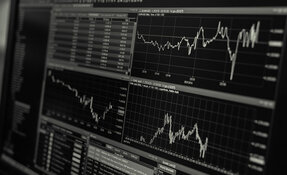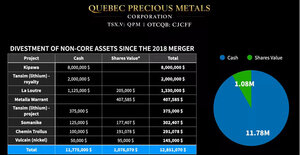
SilverStrategies.com editor Sean Rakhimov expects the economic crisis may go on for a generation even with (or because of) all the government intervention. In this exclusive interview with the Gold Report, he tells us he expects physical gold and silver to lead the parade. When picking stocks to buy now, he says investors have to decide for themselves whether a company will survive the washout; it may be tough going from here to there, but ignoring short-term market fluctuations and sticking with survivors should prove beneficial in the long run.
The Gold Report: Sean, when we last spoke, in December, there was more anxiety about the state of the market, particularly as far as determining the bottom. What’s your view now that we’ve actually had some decent financial indicators come out in the last week or so?
Sean Rakhimov: I take a much longer-term view and, basically, the way certain things — like metal prices or market bottoms — are going to react is going to depend largely on what happens elsewhere, mostly with the government. The things we’re trying to analyze are not masters of their own domains, so to speak. I think a lot of this money printing that has been taking place is starting to filter into prices and it’s showing in metal prices, it’s showing in grocery prices, it’s showing in all kinds of prices.
In terms of a market bottom for the general market, I hesitate to predict that because, again, so many things are wrong and so many things are moving or changing that it is absolutely impossible, at least for me, to predict. What I do know is the market is going to significantly underperform vs. gold. Before the end of this cycle I expect to see the Dow-to-Gold ratio to be on par. Again, if they’re going to print another few trillion dollars (and/or other currencies), the market may go up in nominal terms. All kinds of things can happen, but I do think all this money printing is already starting to show up in prices of hard assets. It’s only going to accelerate going forward.
TGR: With all the money printing already underway and the possibility of even more, how do we begin to explain the U.S. dollar's valuation, relative to other currencies?
SR: Somebody who is a lot more proficient than I am likes to say that the U.S. dollar is the worst currency in the world, except all the others. Basically, the entire financial system is in trouble and anything can happen. For instance, reports from places like Russia say that the population is getting out of their own currency and is trying to put their savings in U.S. dollars. There is all kinds of confusion on all levels and the recent G20 meeting only proved that there is no fundamental difference in the approach or in measures they’re trying to take or proposing to take to address the situation. I don’t think they have any idea what needs to be done. If you recall, in our last interview I anticipated that that the powers that be will fail to agree on potential solutions to these issues.
TGR: Last time we spoke, you predicted three crises would occur: a debt crisis, followed by a currency crisis, then an oil crisis. Do you feel those are still what we’ll be facing and are we through any of them yet?
SR: No, I don’t think we are finished with those by any means. I think the debt crisis is underway. Perhaps it’s evolving into a currency crisis, but there are still a lot of things that need to be worked through. I think the bond market, which is a big debt market, is going to get in trouble. Many governments around the world will probably get into all kinds of trouble with their debts.
That includes the U.S. Another big issue for the average person is that municipalities will get in trouble. Then you have the corporate bonds that have been performing better on the assumption that the corporate bondholders will have priority access over the equity stakeholders to assets of struggling companies. I think that's a false notion, in that there are not going to be any assets to be had or there are not going to be enough to go around, because those assets need to be sold in order to be distributed to bondholders, and they’re not going to be sold for much. I’m making a general statement here, but basically I don’t think the corporate bond market is going to do well. The banking sector is in trouble, the consumer is in trouble, there’s all kinds of credit card debt, and commercial real estate is another big bubble that's going to pop.
So I don’t think the debt crisis is over yet and the way we’re addressing it, of course, is by issuing more debt. That’s not going over too well, so the governments are resorting to printing money outright. I think that’s going to continue and will eventually lead to a currency crisis, so we’ll probably have another year or two of this sort of slow sliding into a major crisis. I don’t think there’s a clear-cut beginning and end to these crises, and I don’t think the big picture has changed.
TGR: If we’re in the debt crisis, but not yet at the currency crisis, how will gold and silver react? Will it be flat until we get to the currency crisis?
SR: Probably not, because again, with these crises, there’s not a clear-cut beginning and end and in different parts of the world or in different countries or currencies they may perform differently. For instance, gold made a new high in a number of currencies, including the Canadian dollar and Australian dollar and Swiss franc. So in those countries the attention is already glued to these things and people are reacting accordingly. In the U.S. for the time being gold is doing better than silver, but it has not made a new high since 2007. In terms of the global market, it’s going to largely depend on what the governments are going to do. If tomorrow, the U.S. government announces another bailout package of, say, $10 trillion, to save the bondholders or somebody else or the municipalities, all bets are off. In that scenario, gold or silver can move up overnight.
I do not believe that at this point trying to time these markets is a good idea. I think this is the time to do your homework, get prepared. This is the calm before the storm in financial assets and investments.
TGR: Do you feel commodities, as they move into more of these bigger issues, will be one of the few investment areas that will shine?
SR: Yes. The commodities themselves will absolutely, positively do that. They will be revalued and they will take on new (old) roles, such as store of value. I think it’s happening already. In the case of some dollar-rich countries like China, Japan, and South Korea they are starting to get rid of their dollars by buying assets in the ground worldwide. Just a couple of days ago there was news about a new billion-dollar hedge fund based in Hong Kong that would focus on resources. There are going to be more and more of these; some will be public and some will be government-sponsored or owned by other entities that do not play in the public market. It’s already happening and the metal prices have inched up, some of them significantly — copper was recently over $2.00. Base metals had a bit of a jump. So this money printing is starting to have an effect, and the only place cash-rich countries can go to that makes any kind of difference to their long-term perspective is commodities.
I think the simplest way to define it for an investor is things that people need (vs. want) will go up in price and the more vital the commodity is, the higher the price will go. But the easiest way to play it would be gold and silver and, specifically, physical gold and silver. That’s your cash, basically. Once you have taken care of putting some of your assets in gold and silver, you will learn about other things that are available to you, wherever you are. For instance, in Africa it could be gold or diamonds and in Brazil it could be agriculture and oil. In Mexico it could be silver. I think gold and silver are crucial for cash preservation and at some point in the future in one form or another they will be used to acquire other goods and services.
TGR: Since you’re talking about physical and using it to convert in terms of purchasing power, how do you view actually owning the physical metal, and having it stored somewhere vs. an ETF or something like the Central Fund of Canada Ltd. (NYSE.AMEX:CEF)?
SR: I think all investors should have some gold and silver coins. For instance, if they’re going to gold, the amount of metal the size of your Blackberry will be about $50,000 worth. That’s a sizeable amount. It’s very small and very easy to put away. In silver, it would probably be a little more challenging because it’ll take a little more space and it’s heaver, but I assure you the time will come when it will stop being bulky and heavy. So, depending on each person’s preference and abilities, they should choose one or the other or a mix of the two. There are types of accounts (e.g. retirement accounts) where you may or may not be able to buy physical metal. In that case, things like the Central Fund of Canada would be a good choice.
TGR: How are you viewing silver now compared to gold? I believe the ratio is now very large between the two. Over the next few years, would you expect silver to perform better than gold or just continue to mirror it?
SR: I am absolutely convinced that during this cycle we will see the gold-to-silver ratio in the 20 range, which means silver would outperform gold by at least by a wide margin. Silver is poor man's gold, more widely used and available in smaller denominations. Hence the overall demand for silver will be higher. This has been well demonstrated in the recent shortages of retail investment products in gold and silver that resulted in high premiums as compared to large bars that traded at spot price.
TGR: Many individuals are saying gold and silver are great for insurance policies, but real investments should be made in the mining companies.
SR: I have two different opinions on that. On the one hand, I agree that generally and historically mining shares did outperform the metals, at least the most successful ones, three to one. On the other hand the metals usually outperform their respective indices. This is a very important to understand: the best gold stocks will do better than gold itself and will be excellent investments. But there is no way for everyone to own only the best stocks and avoid the losers, someone will end up owning the losers and there will be a lot of more of those than winners. This was easily observed in the last tech boom, which gave us spectacular winners such as Oracle, Cisco and others. But there were scores of losers that didn't survive and many people, including yours truly, lost money in those.
If you feel that you can pick the winners, by all means buy resource stocks. On the flip side, if you are not sure, then stick with the physical or at least take care of the physical first.
The last couple of years have been a testament to that approach that myself and some others, like David Morgan, have been the proponents of for the longest time. I can give you an example. My stock portfolio is down over 50%; my physical portfolio is up. And there will be other times like these that will test your convictions and your patience. I have pretty strong convictions about the metals and the economy and currencies and the way things going to play out, so this type of environment does not necessarily scare me. It is very unpleasant and trying, but I don’t see any alternative. If you have a better plan of how to navigate these waters, I am listening.
TGR: Are there some companies that you can share with us that you’re looking at that fall in that category of picking the right company and sticking with it?
SR: I’ll give you an example of one that we discussed previously. SilverCrest Mines Inc. (TSX.V:SVL) is a junior that operates in Mexico: their project there has a feasibility study. The share price has declined with the rest of the market over the last year. Then it rebounded from the bottom by around 300% in the last four to five months. To me a company like that is worth holding and looking at whenever it gets cheap because I believe they will build that mine and they actually, as of today, still plan to be in production by year end. They’re waiting for some permits and they’re working on financing and they’re working on mine plans. You might have to hold through thick and thin in some situations where you have good reasons. This company would be one of them.
The project they have has low capex cost and they anticipate a one-year payback. I like those odds. I like the people that are working on it. Can they be successful? I think so. Will they be successful? We’ll see. In the meantime, the market can do all kinds of things and for all kinds of reasons. You have to stick to your guns and adjust your strategy based on solid reasoning as opposed to impulsive reactions to market fluctuations.
TGR: Are there other companies like that that you’re looking at and saying, hey, there are good fundamentals here—the market has just misjudged it and panicked?
SR: For the majority of investors, in the silver space, I like Pan American Silver Corp. (TSX:PAA) (Nasdaq:PAAS), one of the bigger companies, and Silver Wheaton Corp. (NYSE:SLW). Pan American put two mines in production in the last month. They expect to produce 21.5 million ounces this year. Now they should be profitable at that, but if silver goes even halfway up to where I think it’s going, that’s going to be one blue chip company. Silver Wheaton is another one that should benefit from higher silver prices. I think they’re profitable at current silver prices, but pretty soon they should also be getting the benefits of their investment in Peñasquito, the big mine that Goldcorp is putting in production. When that kicks in it should add about 10 million ounces to production, so that’s going to be a lot.
In the junior space, I think investors should look very carefully at whatever companies they’re either holding or considering, and have good reasons for either. The market will test their conviction — absolutely no doubt about that. Silver market is very volatile, and all kinds of things can happen in the short term. Mining and exploration are among the riskiest businesses out there.
TGR: You’re also following Fortuna Silver Mines Inc. (TSX.V:FVI) and Kootenay Gold Inc. (TSX.V:KTN)?
SR: Yes, those are two companies that I keep track of. Kootenay Gold is a company founded by Jim McDonald, who has a very good track record of finding deposits that become mines. I know of at least two. They recently put out a press release saying Kootenay made three new discoveries, which doesn’t happen a lot, and that's on top of their flagship Promontorio project. I expect the company to do well and I think it’s in good hands. Compared to the rest of the market, their share price has done remarkably well.
Fortuna Silver is another company that I like and that company is a producer, with a mine in Peru. What makes it even more interesting is their asset in Mexico, where they have a gold-silver asset in Oaxaca. They plan to put that project in production next year. So that should beef up the company's balance sheet and improve its prospects tremendously. This year Fortuna plans to produce 1.6 million ounces of silver in Peru at a cost of about $2.00 (net of base metal credits). Provided things work out the way they plan, they’re going to do well there and the project in Mexico, once it’s in production, should significantly change the bottom line.
TGR: Are there any last insights you want to give us in terms of our investor readers?
SR: Well, if I have one message for investors, I would recommend that they use this time to evaluate their own situation, their job, and where they live in preparation for what is ahead and take action. I think it is particularly important on this stretch because the world they live in will be very different three to five years from now, to the negative.
TGR: Sean, we appreciate your time and your insights once again.
In a previous life, Sean Rakhimov designed financial systems to support different areas of the investment banking business. He seized the opportunity to learn about options trading, securities lending, payments processing, clearing and settlement, fixed income securities and margin transactions. He’s not only been putting those learnings to work ever since, but also sharing them with others, with writings published on such internet portals as Le Metropole Café, 321Gold.com, SilverMiners.com and—of course—The Gold Report. Sean, who has been involved in a number of research projects for renowned silver guru and newsletter writer David Morgan, now publishes and edits his own website, SilverStrategies.com .
Want to read more exclusive Gold Report interviews like this? Sign up for our free e-newsletter, and you'll learn when new articles have been published. To see a list of recent interviews with industry analysts and commentators, visit our Expert Insights page.










































